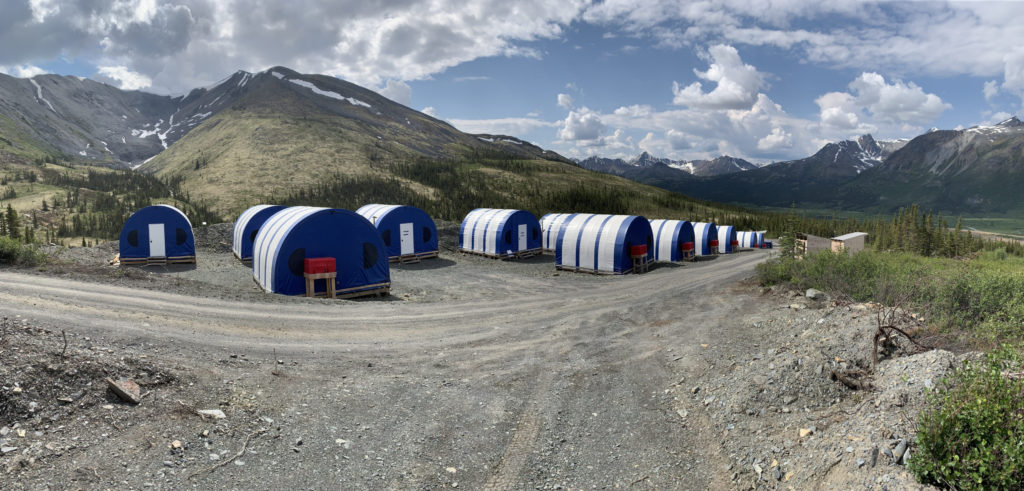
A resource update for Fireweed Metals’ (TSXV: FWZ; US-OTC: FWEDF) Macpass zinc-lead-silver project in Yukon boosts indicated tonnage and contained zinc more than four times over a previous estimate.
Indicated resources now total 56 million tonnes grading 5.49% zinc, 1.58% lead and 24.2 grams silver per tonne, for 6.7 billion lb. zinc, 1.9 billion lb. lead and 43.5 million oz. silver, Fireweed said Thursday. That contrasts with the 11.2 million indicated tonnes and 1.6 billion lb. of contained zinc in the 2018 preliminary economic assessment (PEA).
That study comprised only the Tom and Jason deposits at Macpass, while the update includes those deposits as well as initial estimates for the Boundary and End zones, all located in eastern Yukon near the Northwest Territories border.
“The delivery of the updated mineral resource estimate for the Macpass project marks another key milestone in demonstrating the exploration potential of the Macpass district,” interim CEO Peter Hemstead said in a release. “The addition of Boundary zone now positions Macpass as one of the world’s largest undeveloped primary zinc districts.”
The update suggests that Yukon could re-emerge as a zinc producer, a metal used in galvanized steel and for zinc-ion batteries that’s also included on Canada and the United States’ lists of critical metals. Macpass sits on the Selwyn Basin that stretches from western Yukon down into northeastern British Columbia, and hosts the past-producing Faro lead-zinc mine. That site, about 185 km northeast of Whitehorse, produced from 1969 until 1988.
Just 60 km south of Fireweed, Chinese firm Selwyn Chihong Mining operates Howard’s Pass, a project that hosts 186 million indicated tonnes grading 5.2% zinc and 1.79% lead for 21.3 billion contained lb. zinc and 7.3 billion contained lb. lead, according to a 2012 resource estimate.
Jack Milton, Fireweed’s chief geologist, said the resource update is the result of six years of exploration and 43,000 metres of drilling at the four Macpass targets. He noted that Boundary, which holds the most contained zinc of the targets with 3.6 million lb., is one of the most globally significant zinc discoveries in the last 15 years.
“The potential for by-product gallium and germanium could enhance the Macpass district with further critical minerals exposure,” Milton said.
Inferred resources in the update come to about 48.5 million tonnes at 5.15% zinc, 2.08% lead and 25.3 grams silver, for 5.5 billion lb. zinc, 2.2 billion lb. lead and 39.4 oz. silver, a modest increase from the 39.4 million inferred tonnes in the PEA.
Underscoring Macpass’ potential are the economics outlined in its 2018 PEA, which gave it an after-tax net present value (at an 8% discount) of C$448 million at capital costs of C$404 million.
However, the site’s infrastructure challenges remain. The nearest town of Ross River is 200 km south by road. End zone, the nearest target to the main Macpass camp, is about 5 km down a road that branches off from the Canol Road. A trail that runs 12 km from End zone to Boundary needs to be upgraded and maintained before vehicles can use it. Macpass and its nearby Mactung tungsten deposit also lack reliable power connections.
Shares in Fireweed grained 1.5% to C$1.32 apiece on Thursday, valuing the company at C$238 million. Its shares have traded in a 52-week range of C$0.92 to C$1.53.